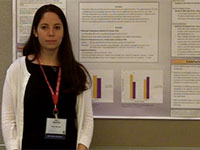Work Engagement, Job Satisfaction, and Productivity—They’re a Virtuous Cycle
Engaged workers—those who approach their work with energy, dedication, and focus—are more open to new information, more productive, and more willing to go the extra mile. Moreover, engaged workers take the initiative to change their work environments in order to stay engaged.
What do we know about the inner workings of work engagement, and how can employers enhance it to improve job performance? In a new article to be published in the August issue of Current Directions in Psychological Science , a journal of the Association for Psychological Science, Arnold B. Bakker creates a model of work engagement based on the best current research.
Work engagement depends on two kinds of resources, says Bakker, a psychologist at Erasmus University Rotterdam in the Netherlands. Job resources include social support, feedback, and opportunities for autonomy, variety, and growth. Such resources are good for the worker—they satisfy basic human needs—and good for the workplace, because when job resources are rich, work gets done more quickly and with better results. The process, moreover, is cyclical. Working better is more rewarding for the worker, which in turn increases her engagement and effectiveness.
Interestingly, engagement—and high-quality performance—is greatest when the demands of the job are highest. This principle applies even to what we think of as low-level jobs, such as those at a fast-food restaurant.
Employees’ own personal resources—such as self-esteem and optimism—also contribute to work engagement. Not only do workers with abundant personal resources approach their jobs with more enthusiasm and joy; they also tend to be in better health, allowing them to focus and work hard. They tend as well to create more of all these goodies for themselves through “job-crafting,” seeking ways to make their responsibilities “fit” their talents and interests and to increase challenge. Again, the process is an upward spiral. Job crafters gain admiration from other workers, thus transferring their attitudes to them. Those more productive attitudes increase the other workers’ engagement and with it, their own productivity and personal reward.
Of course, says Bakker, work engagement differs from person to person, which helps account for the fact that some are leaders and others are followers. For each person, engagement also ebbs and flows from day to day, even hour to hour.
Indeed, no one should expect to feel, or be expected to exhibit, peak engagement every second of the workday. Sometimes work is tedious; employees need to be able to tolerate that. Nor should they be held to impossible standards. Down time, says Bakker, is not only a mark of sympathetic management. It helps renew workers, keeping them happy, productive—and engaged.




Comments
very interesting article, thank you.
APS regularly opens certain online articles for discussion on our website. Effective February 2021, you must be a logged-in APS member to post comments. By posting a comment, you agree to our Community Guidelines and the display of your profile information, including your name and affiliation. Any opinions, findings, conclusions, or recommendations present in article comments are those of the writers and do not necessarily reflect the views of APS or the article’s author. For more information, please see our Community Guidelines.
Please login with your APS account to comment.